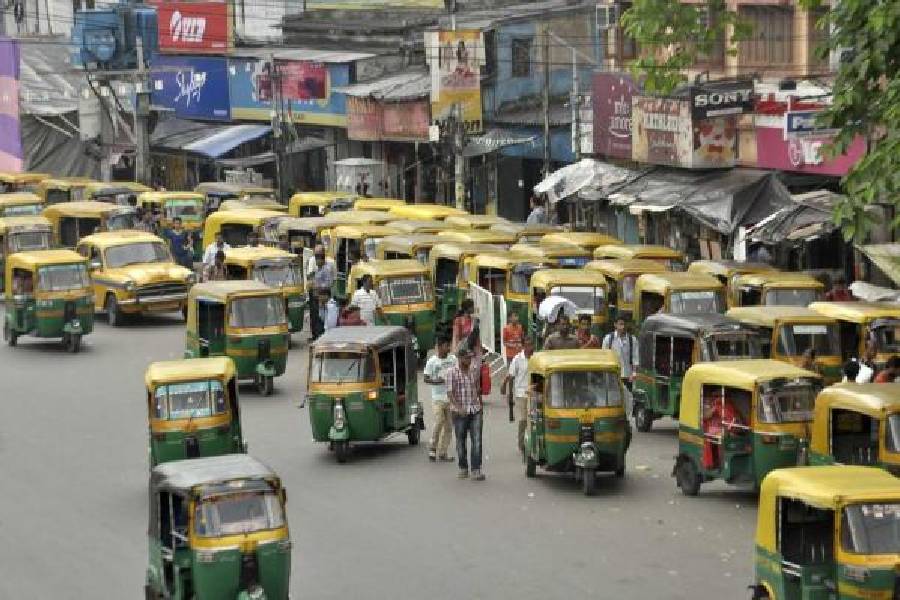The state government has decided that regional transport boards that issue permits to commercial vehicle owners, must have representatives from police so that there is a consensus on the number of autorickshaws that can be accommodated in a new route and no new vehicle gets added in saturated routes.
"We have urged respective boards under the regional transport authorities (RTAs) to ensure representatives from the police who are aware of traffic situation under their respective jurisdictions are accommodated," transport minister Snehasis Chakraborty told The Telegraph on Tuesday.
"This will help ensure that no new autorickshaw gets a permit on routes that are already saturated. Their opinion will help decide on the number of autorickshaws that can be accommodated in new routes," he said.
A regional transport board is an authorised entity to issue new permits, cancel permits, draw up new routes and even extend the existing ones. A board comprises a district magistrate, a representative of a political party, a regional transport officer and a motor vehicles inspector.
"The board among other vehicles decides on permits for autorickshaws in Kolkata and its adjoining areas," said a senior transport department official.
Over the years several autorickshaw routes have become liabilities because of an unregulated spike in the number of vehicles.
The Garia-Tollygunge route currently has more than 800 three-wheelers ferrying passengers either way. The Ultadanga-Sovabazar route has in excess of 1,000 autos sharing road space with cars, buses, goods vehicles, motorbikes and cycles.
The fleet strength fixed by the transport department for these two routes is 120 and 145, respectively.
The Ultadanga-Baguiati route has a sanctioned fleet strength of 75. In reality, more than 200 autos ply between the two places.
"Commercial vehicles that are 15 years or older are getting scrapped and the government is keen on issuing fresh permits to fill up the supply-demand gap," Chakraborty said.
"But that doesn't mean permits for autorickshaws will be issued arbitrarily. Several autorickshaw routes in Kolkata and in the adjoining areas are saturated. The government's focus is now on areas that are witnessing a spurt of real-state development but lack adequate connectivity."
Transport department officials said they have received appeals from parts of New Town, Bhangar, Dakshineswar, New Garia, and Narendrapur for new autorickshaw routes. Some of these pockets have witnessed a real-estate boom but the bus service has remained woefully poor.
"We plan to draw up new routes in such areas," said a senior transport department official.
"Over 200 autorickshaws have been plying illegally in and around Barasat since the pandemic. We want to accommodate them in new routes."
